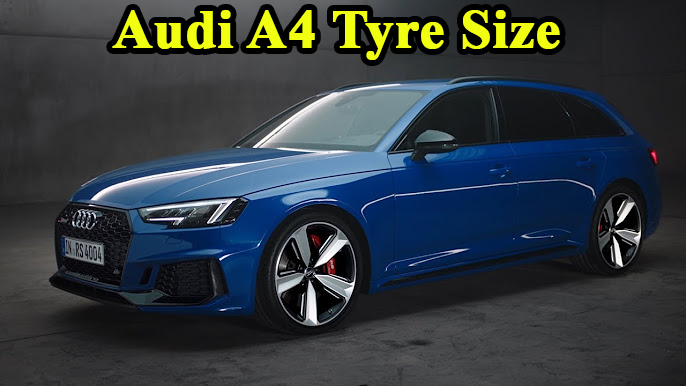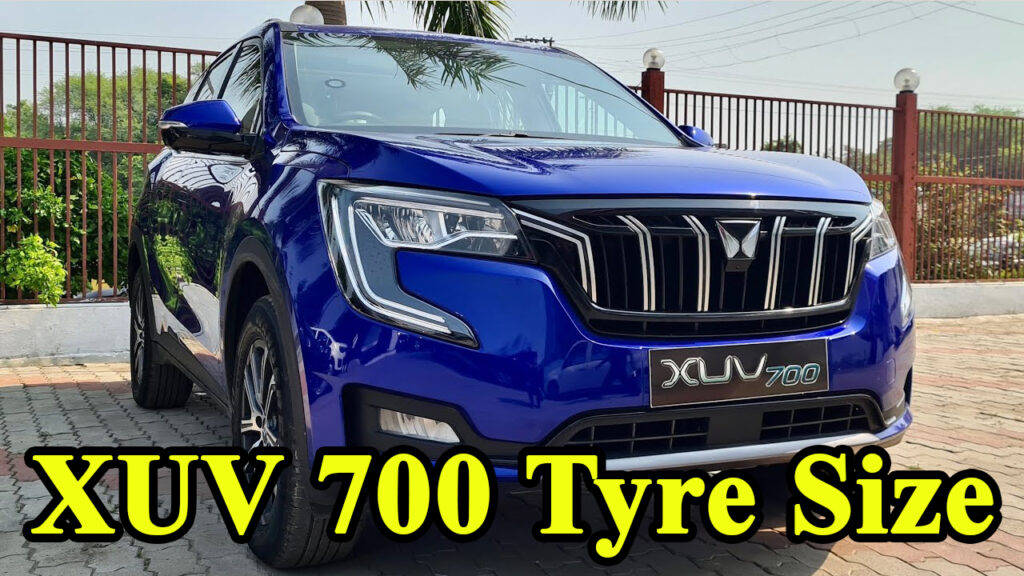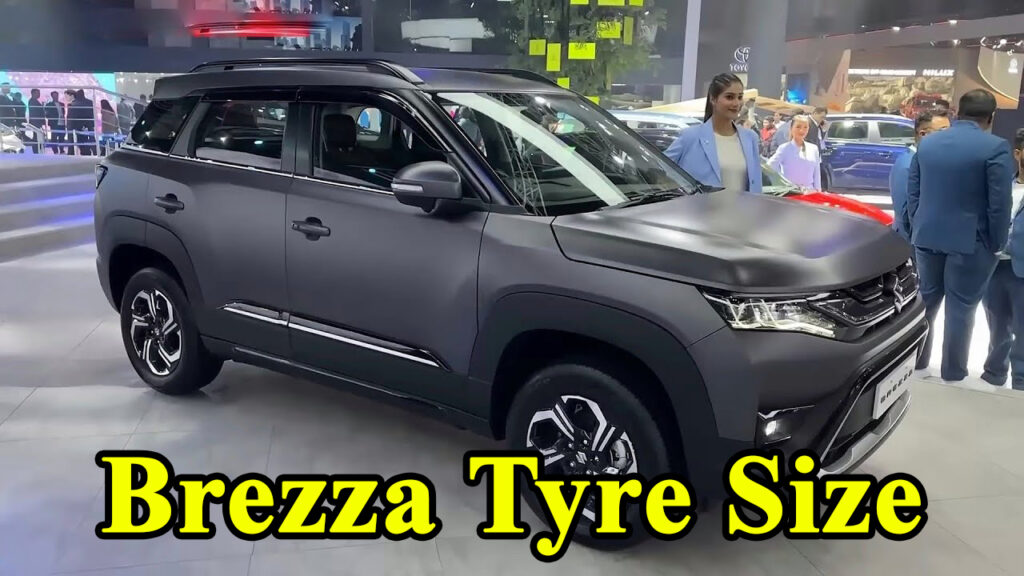Kia Seltos Tyres: The Kia Seltos! It’s a car that truly redefined the compact SUV segment in India, wouldn’t you agree? From its bold design to its feature-packed interior, it captured the imagination of so many, myself included. I remember the buzz when it first launched in my city, Bengaluru, with everyone talking about its fresh look and premium feel. It quickly became a common sight on our bustling roads, a testament to its popularity.
But here’s the thing about any car, no matter how good it looks or how many gadgets it boasts: its connection to the road ultimately comes down to its tyres. These aren’t just round pieces of rubber; they’re the unsung heroes of your driving experience, influencing everything from safety and comfort to fuel efficiency and handling. For a car like the Seltos, which promises a blend of urban agility and highway cruising prowess, understanding its tyres isn’t just important—it’s crucial.
So, let’s peel back the layers and embark on an in-depth exploration of Kia Seltos tyres. We’ll delve into everything you need to know, from understanding the factory-fitted options to making informed decisions about upgrades, maintenance, and what truly makes a good tyre for your Seltos.
The Foundation: Understanding Your Seltos’s Stock Tyres
When you drive a new Kia Seltos off the lot, it comes equipped with tyres carefully selected by Kia to offer a balanced performance for the average driver. The Seltos, depending on its variant, typically comes with one of two primary tyre sizes:
- 215/60 R16: This size is usually found on the lower and mid-range variants.
- 215/55 R17 or 235/45 R18: These are often seen on the higher-end variants, offering a slightly larger diameter and often a lower profile for a more sporty aesthetic and potentially sharper handling.
Let’s decode these numbers:
- 215 (or 235): This is the tyre width in millimeters. A wider tyre generally means more contact patch with the road, potentially offering better grip and stability.
- 60 (or 55, or 45): This is the aspect ratio, representing the sidewall height as a percentage of the tyre width. A lower aspect ratio (e.g., 45) means a shorter sidewall, which can translate to better handling and steering response but often at the cost of ride comfort and increased susceptibility to rim damage on rough roads.
- R: Indicates a radial tyre construction, which is standard for modern passenger vehicles.
- 16 (or 17, or 18): This is the rim diameter in inches, indicating the size of the wheel the tyre is designed to fit.
The brand of the stock tyres can vary, but common original equipment (OE) providers for the Seltos in India have included Goodyear and Apollo. While these tyres are designed to meet Kia’s specifications for general use, they are often chosen to balance cost, comfort, and acceptable performance for a wide range of conditions.
The Heart of the Matter: Tyre Pressure and Its Importance
Imagine running a marathon in shoes that are either too loose or too tight – you wouldn’t perform well, right? Tyres are similar. Maintaining the correct tyre pressure is paramount for the Seltos’s performance, safety, and longevity.
Kia generally recommends a tyre pressure of around 33-35 PSI (pounds per square inch) for the Seltos, though this can vary slightly based on the specific variant and load. You’ll find the exact recommended pressure on a sticker located on your driver’s side door jamb or in your owner’s manual.
Why is correct tyre pressure so vital?
- Safety: Under-inflated tyres can lead to increased heat build-up, potentially causing a blowout, especially at high speeds. Over-inflated tyres reduce the contact patch, leading to less grip and longer braking distances.
- Fuel Efficiency: Properly inflated tyres reduce rolling resistance, meaning your engine works less to move the car, leading to better mileage. I’ve personally seen a noticeable dip in fuel efficiency when my tyres are slightly underinflated, especially during my commutes from Whitefield to Electronic City in Bengaluru.
- Tyre Life: Correct pressure ensures even wear across the tyre tread. Incorrect pressure leads to uneven wear – under-inflation causes wear on the shoulders, while over-inflation wears the center. This significantly shortens the tyre’s lifespan.
- Handling and Comfort: Optimal pressure ensures the Seltos handles as intended, providing stable cornering and a comfortable ride. Deviations can make the ride harsher or the steering feel vague.
Most modern Seltos models come with a Tyre Pressure Monitoring System (TPMS), which is a fantastic safety feature. However, don’t rely solely on it. A good habit is to check your tyre pressure manually with a reliable gauge at least once a month, and always before embarking on long journeys.
When to Change: Signs Your Seltos Needs New Shoes
Tyres aren’t meant to last forever, and knowing when to replace them is crucial for your safety and your Seltos’s performance. Here are the key indicators:
- Tread Depth: This is the most critical factor. The legal minimum tread depth in India is 1.6 mm. However, experts recommend replacing tyres when the tread depth reaches 2-3 mm for optimal safety, especially in wet conditions. You can use the “penny test” (or a 1 Rupee coin in India!) or look for the tread wear indicators (small bars within the grooves). If the tread is flush with these indicators, it’s time for new tyres.
- Age: Even if they look okay, tyres degrade over time due to exposure to elements, heat, and UV rays. Most manufacturers recommend replacing tyres every 5-6 years, regardless of tread depth. Check the DOT code on your tyre sidewall for the manufacturing date (e.g., 1523 means the 15th week of 2023).
- Cracks and Bulges: Visible cracks on the sidewall or tread indicate the rubber is deteriorating. Bulges or “bubbles” are serious and mean the internal structure of the tyre has been damaged, posing an immediate blowout risk. If you spot these, get them replaced immediately.
- Vibrations and Noise: Unusual vibrations through the steering wheel or seat, or increased road noise, can be signs of uneven wear, imbalance, or internal tyre damage.
The Upgrade Game: Enhancing Your Seltos’s Grip and Comfort
While the stock tyres are competent, many Seltos owners, myself included, consider upgrading for specific benefits. It’s like adding a custom exhaust to a motorcycle – it might not be strictly necessary, but it can significantly enhance the experience.
Common Reasons for Upgrading:
- Improved Grip: For those who prioritize spirited driving or need better traction in diverse weather conditions (especially monsoons in India), upgrading to a tyre with a softer compound or more aggressive tread pattern can make a huge difference.
- Enhanced Comfort & Reduced Noise: Some stock tyres can be a bit noisy or transmit too much road harshness. Premium touring tyres are designed to offer a quieter and more supple ride.
- Better Braking: Tyres with superior wet and dry braking capabilities can significantly shorten stopping distances, a critical safety improvement.
- Longer Life: Certain tyre compounds and designs are engineered for extended mileage, appealing to high-mileage drivers.
Popular Tyre Brands and Models for Kia Seltos Owners in India:
When it comes to upgrading, the Indian market offers a fantastic range of choices. Here are some highly regarded options, along with insights from personal experience and feedback from fellow Seltos owners:
-
Michelin Primacy 4 ST:
- Expert Opinion/User Experience: This is often the gold standard for those seeking a premium experience. I fitted a set of Primacy 4 STs on my previous car, a sedan, and the difference in ride quality and noise levels was remarkable. It felt like gliding on silk. Seltos owners consistently rave about their quietness, superior wet and dry grip, and excellent braking performance. They truly elevate the comfort factor.
- Value (Price): These are on the higher end of the price spectrum, typically ranging from ₹8,000 – ₹12,000 per tyre for the Seltos sizes, depending on the variant and retailer.
- Pros: Exceptional comfort, very low road noise, excellent wet and dry grip, superior braking.
- Cons: Premium price, not designed for aggressive off-roading.
-
Continental UltraContact UC6 (or UC6 SUV):
- Expert Opinion/User Experience: Continental tyres have always impressed me with their balance of performance and comfort. The UC6 is a fantastic all-rounder. Many Seltos owners appreciate its robust build quality for Indian roads and its consistent performance across varying conditions. While some reviews mention potential for premature wear on very coarse asphalt, overall feedback is positive for its grip and fuel efficiency.
- Value (Price): Generally a bit more accessible than Michelins, often in the range of ₹7,000 – ₹10,000 per tyre.
- Pros: Good balance of wet and dry grip, decent comfort, reliable braking, often good rolling resistance for fuel efficiency.
- Cons: Some reports of noise at higher speeds or on specific road surfaces, occasional wear concerns.
-
Apollo Alnac 4G (or Apterra series for SUV focus):
- Expert Opinion/User Experience: Apollo has made significant strides in recent years, and their Alnac 4G is a popular choice for value and performance. I’ve seen many cab drivers and personal car owners in cities like Chennai and Pune opt for Apollo, appreciating their durability. For the Seltos, specifically, the Apterra series might be more suited if you venture off-tarmac occasionally. User reviews for the Alnac 4G on the Seltos often mention good dry grip and decent handling for aggressive driving, though some find wet grip and comfort “so-so,” particularly noting noise at higher speeds on concrete roads.
- Value (Price): More budget-friendly, typically between ₹5,000 – ₹8,000 per tyre.
- Pros: Good value for money, decent dry grip, durable for Indian road conditions.
- Cons: Can be noisy, wet grip and comfort might not be as refined as premium brands.
-
Goodyear Assurance TripleMax 2:
- Expert Opinion/User Experience: Goodyear is a well-established brand, and the TripleMax 2 focuses on safety and longevity. My uncle fitted these on his compact SUV, and he’s quite happy with the mileage he’s getting. Seltos owners often praise its excellent dry braking and straight-line wet grip. However, some find the ride quality a bit harsh due to stiff sidewalls, and wet cornering grip can be unpredictable when the tyres are worn.
- Value (Price): Competitively priced, often in the ₹6,000 – ₹9,000 per tyre range.
- Pros: Excellent dry braking, good straight-line wet grip, potentially long-lasting.
- Cons: Can be harsh ride, wet cornering can be unpredictable when worn, some noise.
-
CEAT SecuraDrive:
- Expert Opinion/User Experience: CEAT has been making a strong comeback in the premium tyre segment, and the SecuraDrive is a testament to that. I recall a friend testing these on a compact SUV (not a Seltos, but similar segment) and being genuinely surprised by their performance, particularly in braking and comfort. For the Seltos, these offer a compelling package, improving braking distances and comfort while reducing road noise compared to some OE tyres.
- Value (Price): Good value, often priced between ₹6,000 – ₹9,000 per tyre.
- Pros: Improved braking, good comfort, reduced road noise, suitable for premium hatchbacks and compact SUVs.
- Cons: May not be as performance-oriented as some international premium brands for very aggressive driving.
-
Pirelli Scorpion Verde (for those seeking more performance/SUV specific):
- Expert Opinion/User Experience: Pirelli is known for its performance-oriented tyres. While not a budget option, the Scorpion Verde is designed for SUVs and offers excellent grip and control. I’ve seen these on larger SUVs and the road presence they offer is undeniable. Seltos owners who prioritize sharp handling and superior wet/dry traction might consider these, though they come at a significant cost.
- Value (Price): Premium pricing, likely ₹10,000 – ₹15,000+ per tyre.
- Pros: Excellent wet and dry traction, enhanced controllability, comfortable and quiet ride for a performance tyre.
- Cons: Very expensive, might be overkill for regular city driving.
A Word on Upsizing: While tempting to go for larger wheels and lower profile tyres for aesthetics, be cautious. Upsizing can affect ride comfort, fuel efficiency, speedometer accuracy, and even put strain on your suspension components. Always consult with a tyre expert before considering any upsizing beyond the manufacturer’s recommended sizes.
Maintaining Your Investment: Tyre Care Tips
Even the best tyres won’t last if not cared for. Here are some essential maintenance tips:
- Regular Rotation and Balancing: Rotate your tyres every 5,000-10,000 km (or as per your Seltos’s service schedule) to ensure even wear. Balancing ensures the weight is evenly distributed, preventing vibrations and uneven wear.
- Wheel Alignment: Improper alignment can cause rapid and uneven tyre wear. Get your alignment checked annually or if you notice your Seltos pulling to one side. A simple check-up at a local tyre shop, like the one near Lalbagh Road in Bengaluru, can save you a lot of hassle and money in the long run.
- Driving Habits: Avoid harsh braking, rapid acceleration, and speeding over potholes. These habits significantly reduce tyre life.
- Cleaning: Regularly clean your tyres to remove dirt, grime, and brake dust. Avoid harsh chemicals that can degrade the rubber.
- Storage (if applicable): If you’re storing tyres, keep them in a cool, dry, dark place away from direct sunlight and chemicals.
Personal Touch: My Tyre Journey with a Seltos
My tryst with the Kia Seltos’s tyres has been an interesting one. When I bought my Seltos HTX, it came with Goodyear Assurance TripleMax tyres. Initially, they were perfectly adequate for my daily city commutes and occasional highway trips to places like Mysore or Coorg. The ride was comfortable enough, and braking felt secure.
However, as I started doing more long-distance drives and encountering varied road conditions, including some of the patchy national highways around Karnataka, I noticed a slight increase in road noise, particularly on concrete stretches. Also, during the heavy Bengaluru monsoons, while the grip was decent, I yearned for a bit more confidence, especially when hitting unexpected puddles.
After about 35,000 km, with the tread nearing its limits, I decided to upgrade. After much research and discussions with tyre dealers in my locality (one prominent one near Koramangala was particularly helpful), I narrowed it down to the Michelin Primacy 4 ST. Yes, they were a significant investment, costing me around ₹40,000 for a set of four at that time, but the difference was night and day.
The first thing I noticed was the drastic reduction in road noise. It felt like the Seltos had suddenly gained an extra layer of insulation. The ride became noticeably more supple, soaking up small bumps and undulations with ease. More importantly, the wet grip was phenomenal. Driving in heavy rain now felt far more secure, with a reassuring sense of control. The braking also improved, feeling sharper and more linear. For me, the upgrade was absolutely worth the price, transforming the overall driving experience of my Seltos into something truly premium.
Conclusion
Choosing the right tyres for your Kia Seltos isn’t just about replacing worn-out rubber; it’s about optimizing your driving experience. Whether you prioritize comfort, performance, longevity, or a balance of all these, understanding your options and maintaining your tyres diligently will pay dividends in safety, fuel efficiency, and overall driving pleasure.
Think of your tyres as the bridge between your Seltos and the road. A strong, well-maintained bridge ensures a smooth, safe, and enjoyable journey. So, invest wisely, maintain diligently, and let your Kia Seltos roll confidently on the roads, wherever your adventures take you.
(FAQ) about Kia Seltos Tyres
Q1: What are the standard tyre sizes for the Kia Seltos?
A1: The Kia Seltos typically comes with either 215/60 R16, 215/55 R17, or 235/45 R18 tyres, depending on the variant. Always check your car’s owner’s manual or the sticker on the driver’s side door jamb for the exact recommended size for your specific model.
Q2: What is the recommended tyre pressure for the Kia Seltos?
A2: The manufacturer-recommended tyre pressure for the Kia Seltos generally ranges from 33 to 35 PSI (pounds per square inch) for both front and rear tyres. This can vary slightly by trim, so always refer to the sticker on your car’s door jamb.
Q3: How often should I check my Seltos’s tyre pressure?
A3: It’s advisable to check your tyre pressure at least once a month, and always before embarking on long journeys. Even with a TPMS (Tyre Pressure Monitoring System), manual checks ensure accuracy.
Q4: When should I replace my Kia Seltos tyres?
A4: You should replace your tyres when the tread depth reaches the legal minimum of 1.6 mm (indicated by tread wear indicators), or ideally when it’s around 2-3 mm for better safety. Also, replace them if they are older than 5-6 years, show visible cracks, bulges, or punctures that cannot be safely repaired.
Q5: Can I upgrade my Kia Seltos tyres for better performance or comfort?
A5: Yes, many Seltos owners upgrade their tyres. Popular choices for improved comfort, reduced noise, and better wet/dry grip include Michelin Primacy 4 ST and Continental UltraContact UC6. For a more balanced, value-oriented option, brands like Apollo (Apterra/Alnac 4G) and CEAT (SecuraDrive) are also popular.
Q6: Is it okay to upsize my Seltos tyres? A6: While upsizing (going for larger rim diameter or wider tyres) can sometimes enhance aesthetics or performance, it’s crucial to be cautious. Significant upsizing can negatively impact ride comfort, fuel efficiency, speedometer accuracy, and potentially strain suspension components. Always consult with a tyre specialist to understand the implications and ensure compatibility.
Q7: How often should I rotate and balance my Seltos tyres?
A7: Tyre rotation and balancing are typically recommended every 5,000 to 10,000 km, or as advised in your Kia Seltos service manual. This helps ensure even tread wear and extends the life of your tyres.
Q8: What are some common tyre issues faced by Seltos owners?
A8: Like any car, Seltos owners can face issues such as punctures, uneven wear (often due to incorrect pressure or misalignment), and noise from worn-out tyres. Some early Seltos models reportedly came with OE tyres that certain owners felt were of lower quality or prone to punctures, leading many to consider early upgrades




